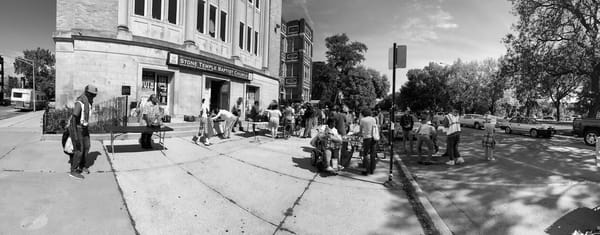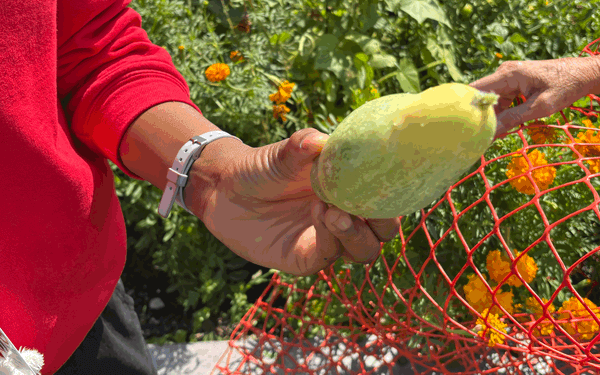a mascletà for burning and flowering: Natasha Mijares on ritual, resistance, and rebirth
Artist Natasha Mijares brings the Valencian tradition of mascletà to Humboldt Park through spoken word, textile, and performance.
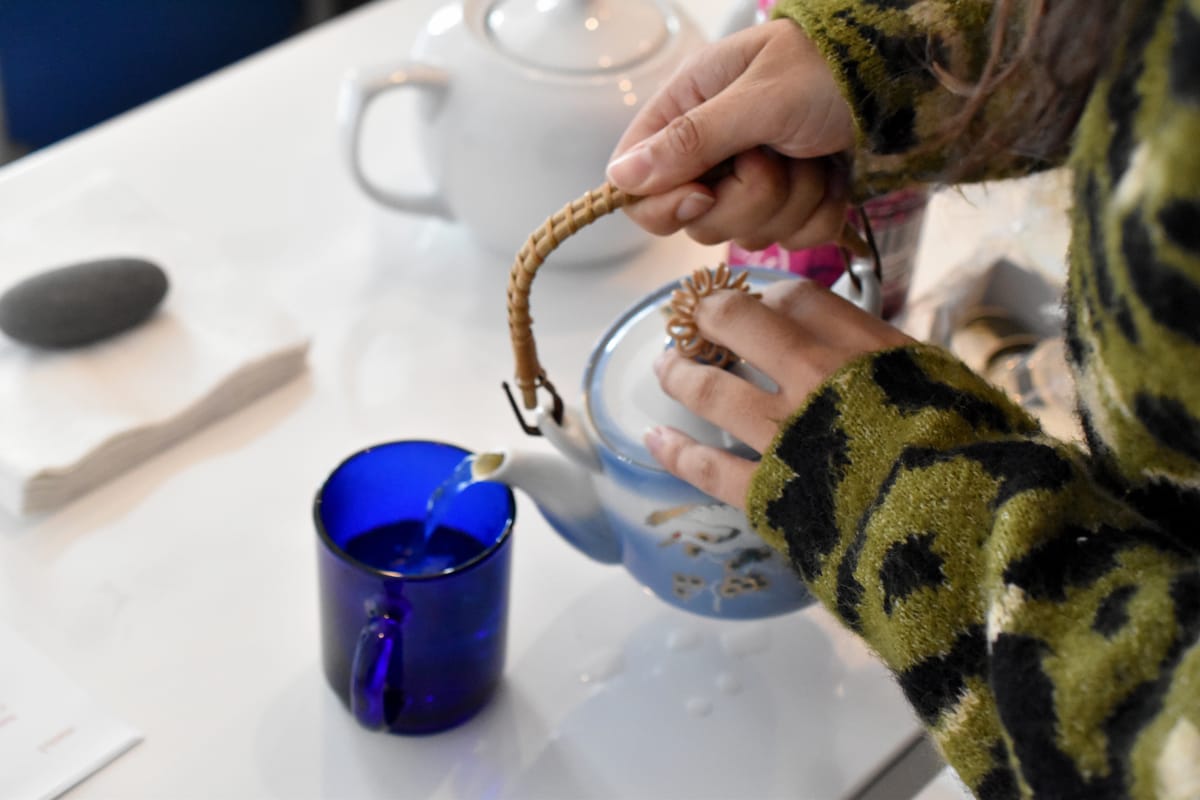
Translating Fire into Healing
In a mascletà for burning and flowering, artist Natasha Mijares reimagines the Valencian tradition of mascletà through text, textile, and performance.
"There is an art of gathering what to burn."
Her work explores the tension between destruction and renewal, the body and the collective, and the rituals we inherit and reinvent.
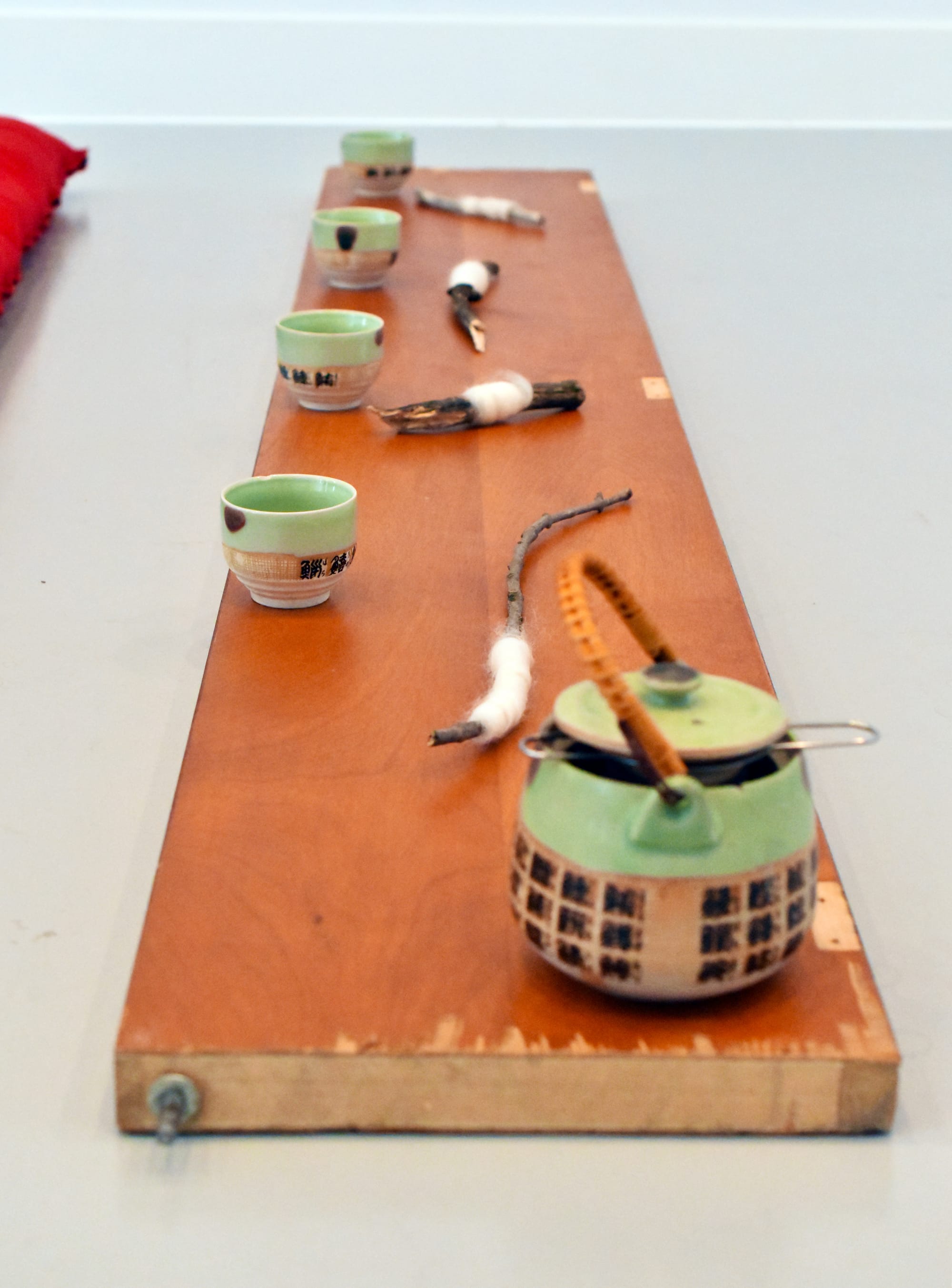

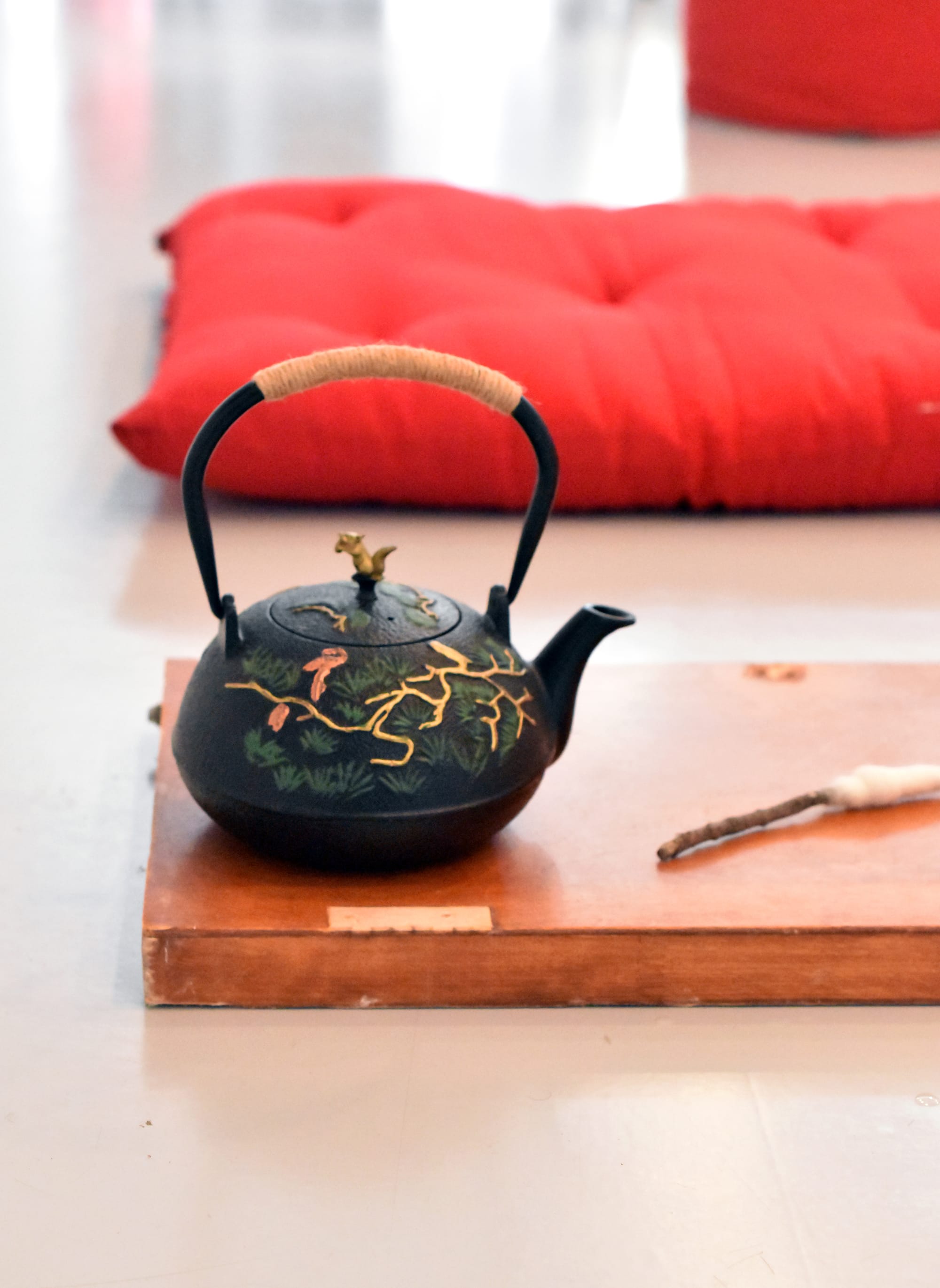
[LEFT] Kettle and cups adorn a wide wooden plank ahead of Mijares' performance. [CENTER] A basket of raw wool-wrapped twigs. [RIGHT] A black kettle used to serve and welcome the audience into Mijares performance. | NaBeela Washington/15 West
💥 What is Mascletà? ↓[click to expand]
Originating in Valencia, Spain, the mascletà is a centuries-old tradition intrinsically tied to Las Fallas, the city's most important festival held each March. Unlike nighttime fireworks displays that prioritize visual spectacle, mascletàs take place in broad daylight—the focus is entirely sonic and physical.
Hundreds of firecrackers and pyrotechnic devices are synchronized to create rhythmic explosions that build in intensity and speed, culminating in a thunderous crescendo called the terremoto (earthquake). The sound reverberates through spectators' chests and bones, creating what many describe as a collective, almost meditative experience of controlled chaos.
The tradition has deep roots in Valencia's historic pyrotechnic industry and has evolved from religious celebrations into a form of communal art.
During Las Fallas, mascletàs are performed daily at 2 PM in the Plaza del Ayuntamiento, drawing massive crowds who stand in silence, bodies absorbing the percussion. It's less about watching and more about feeling, a shared physical experience that transcends individual boundaries.
About the Artist
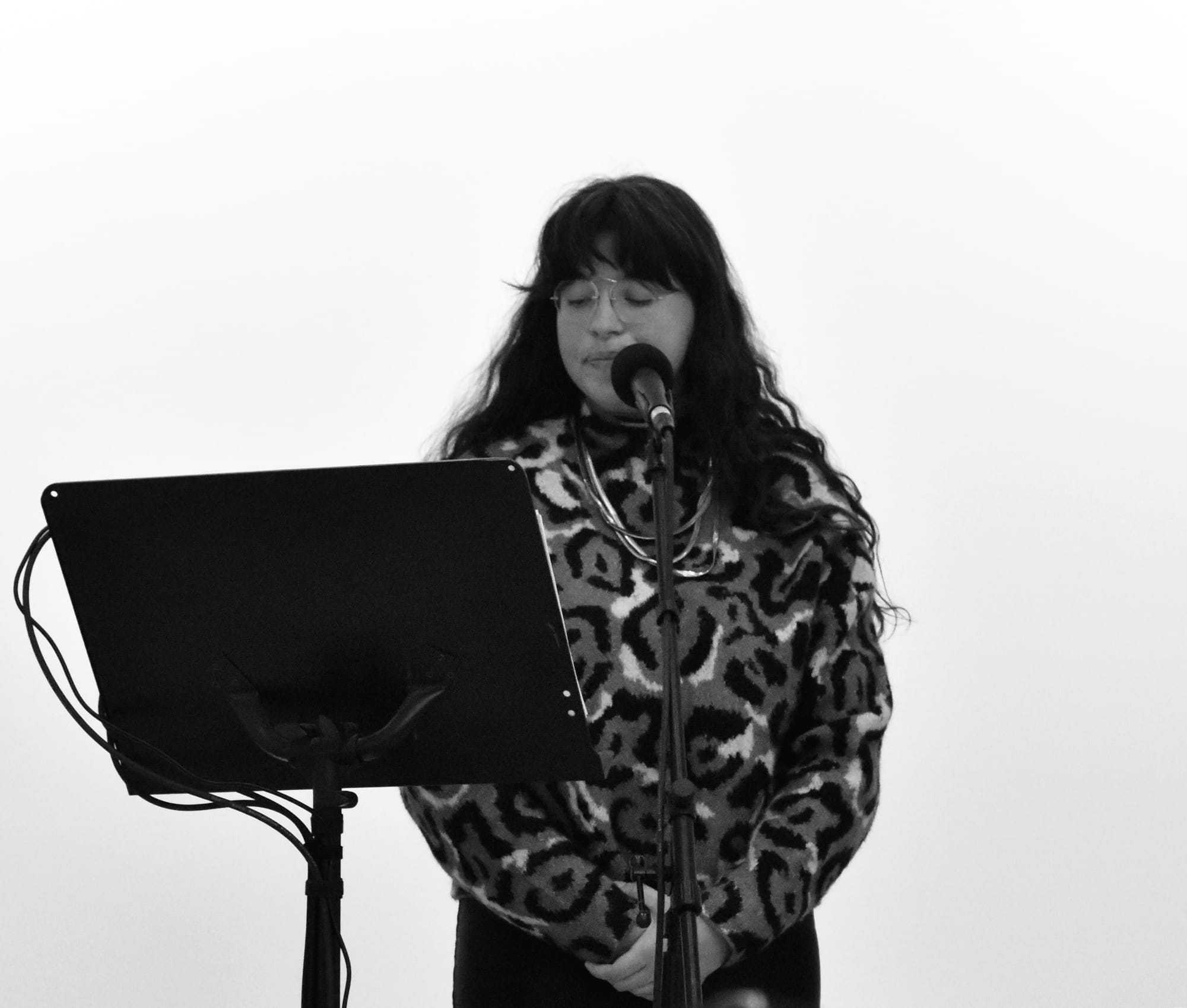
Natasha Mijares (she/they), 32, is an artist, writer, curator, and educator who received her MFA in Writing from The School of the Art Institute of Chicago. She/they have exhibited at MECA International Art Fair in Puerto Rico, The Milwaukee Institute of Art & Design, TCC Chicago, and Locust Projects, with published work in Container, Vinyl Poetry, The Gravity of the Thing, and Hypertext Magazine.
Q&A with Natasha Mijares
How does this work engage with the violence embedded in traditions we inherit or return to?
NM: I think we’re in a cultural [moment] right now that necessitates looking back in history to inform our present and our future. A lot of people are charting paths or [are] already on their way to “escaping” America and the current conditions we are in.
My family is working on acquiring Spanish citizenship through the birthright citizenship program, as our lineage traces back to Spain from Cuba. What irks me about this process is that we are returning to our colonizer in this gesture; so my decision in picking a Spanish ritual is to comment on the fact that the traditions of our country, and many others, are violent in nature and we are stuck in a cycle of violence no matter where we turn...
"What does it take to escape America? I have run out of altars. We circle back to ourselves each time ..."
You describe serving rose tea and inviting the audience to throw wool-wrapped twigs into a fire. What are you hoping to burn and what do you hope blooms from this collective act? Do you feel this is an act of resistance in a time when more people are coming together to protest?
NM: In my version of the mascletà, I served rose tea to reference the pink and blue smoke that emerges out of the fireworks. Rose tea, as it is steeped, starts as a blueish purple, and then it darkens to red with time. I [then] read text I wrote that explores bodies, dance, nature, deception, and the geopolitical overtones to the mascletà and how we embrace and escape them at the same time.
I am hoping that this version of the mascletà is burning the hate and terror we are seeing every day in our country and that it will bloom the love and care we are seeing from our neighbors in response. I think that resistance and protest is a specific political act and I find this performance to be more of a spiritual signal of that energy, actual resistance and protest calls for deep action, which should also be practiced.
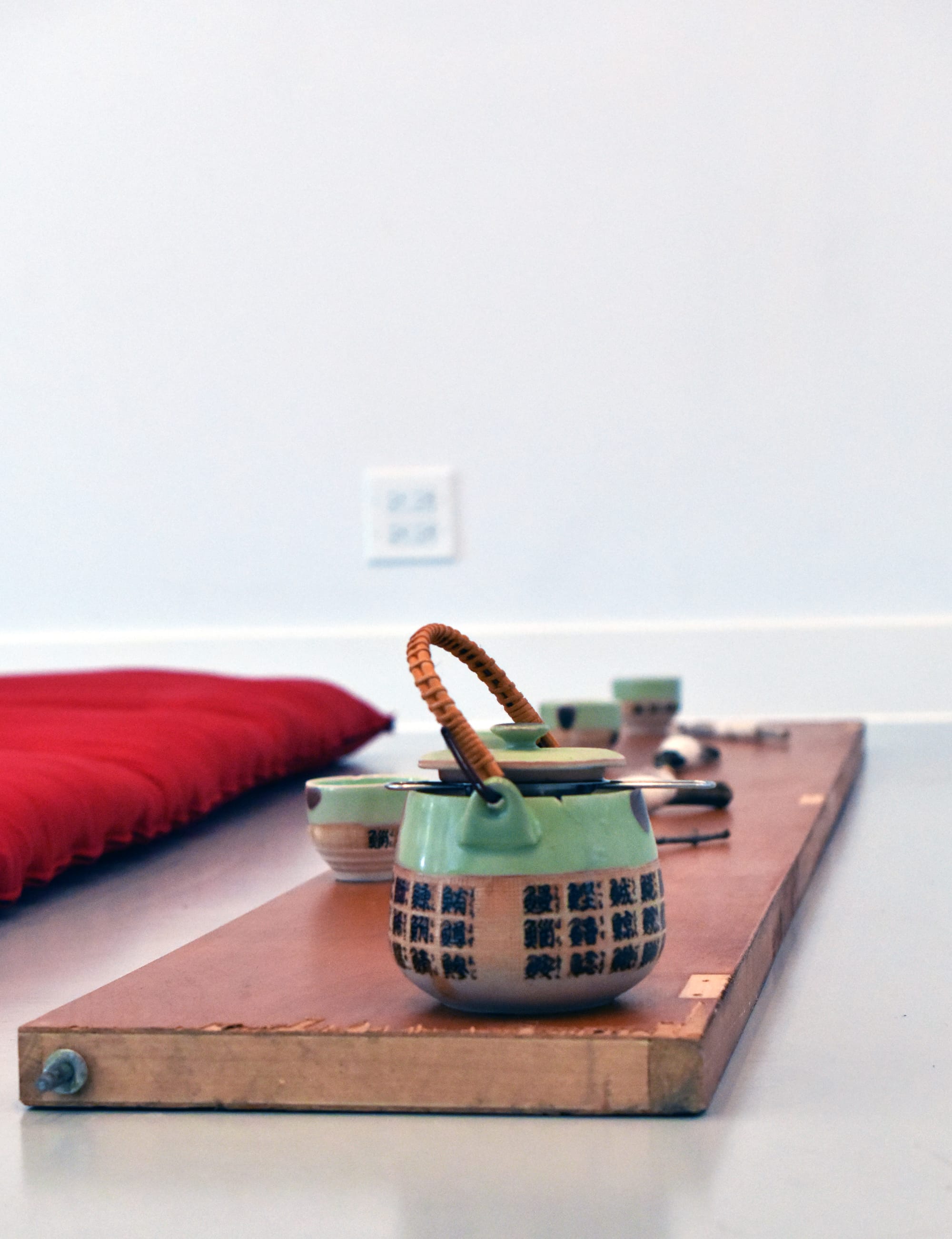

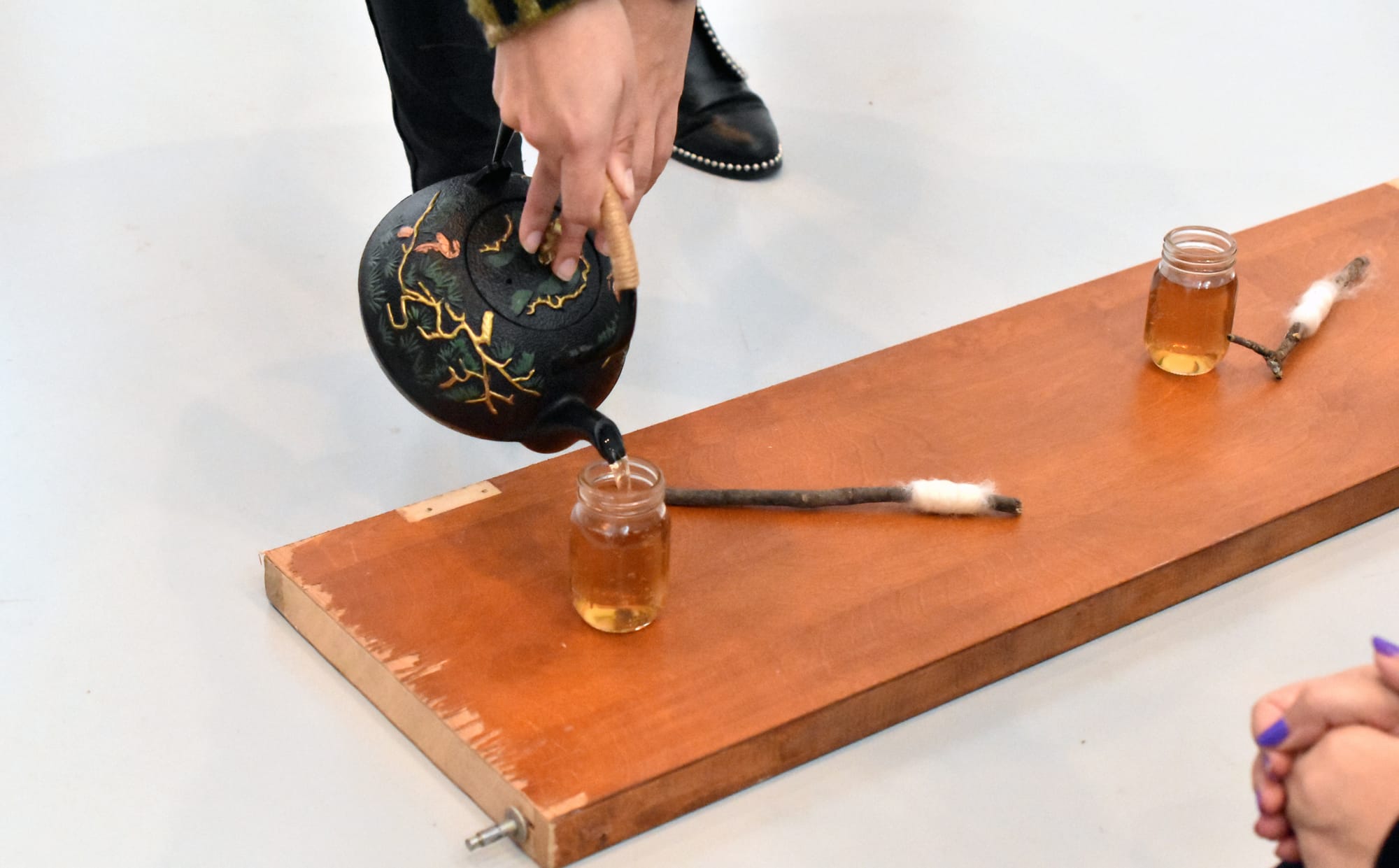
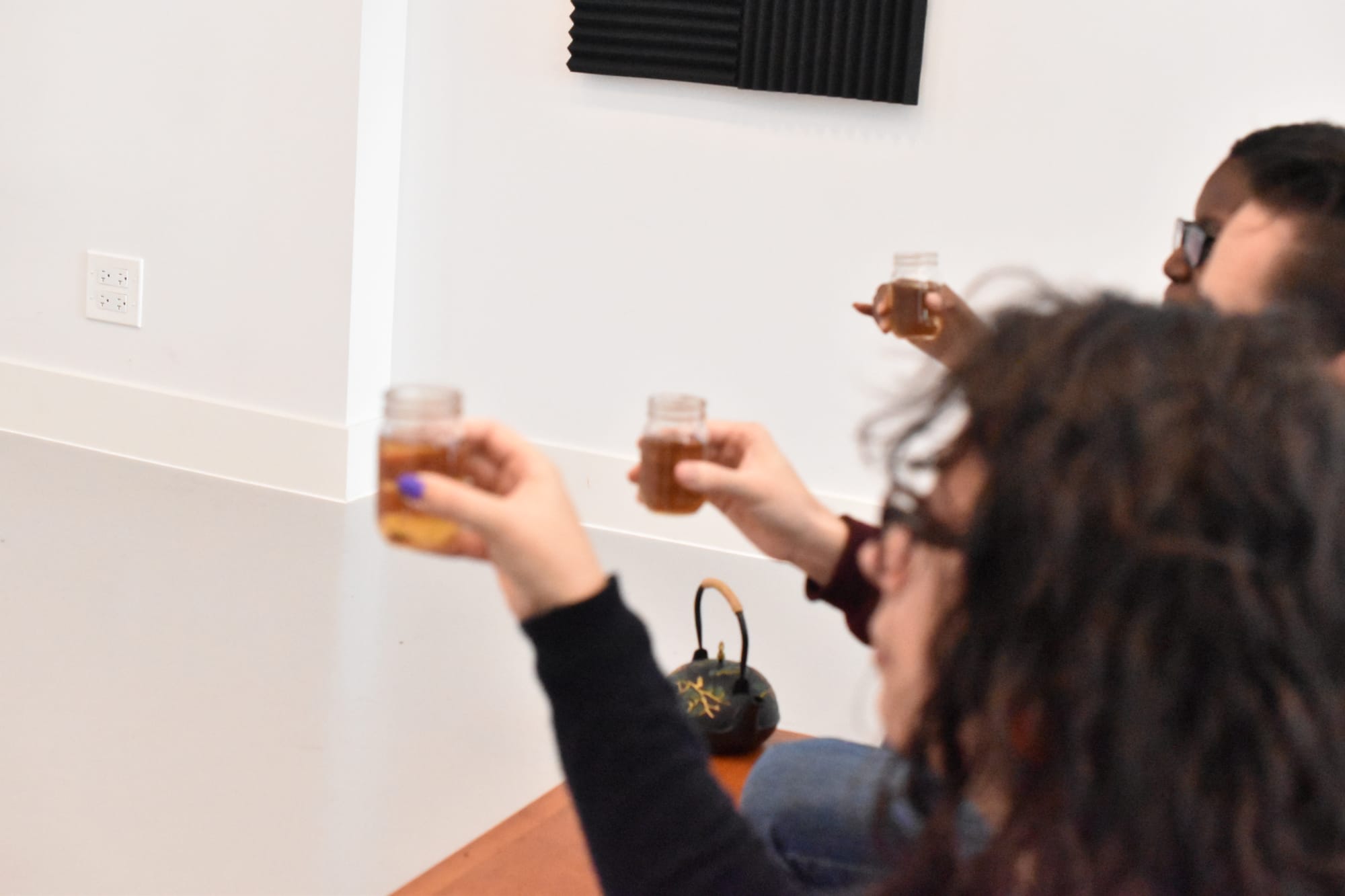
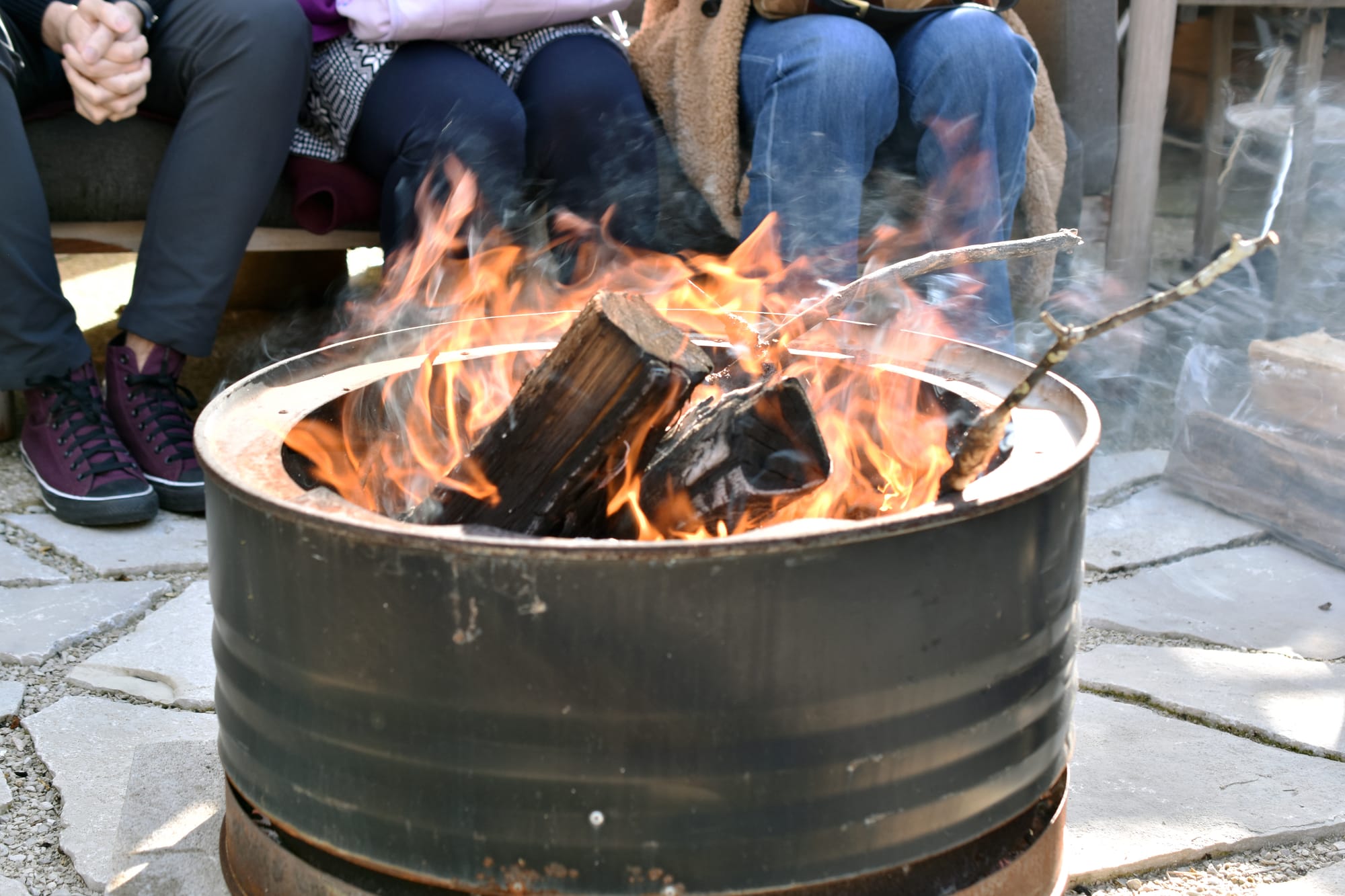
[FROM TOP LEFT TO BOTTOM RIGHT] A red cushion for guests, kettle and cups. A black kettle and raw wool-wrapped twig and mason jar. Mijares pouring tea at the start of the performance. Guests lifting their tea during Mijares' meditation. Guests after placing their twigs in the fire, the conclusion of Mijares' performance. | NaBeela Washington/15 West
You mention moving 'away from self-centeredness and toward collective care.' How does gathering what to burn become a practice of interdependence rather than individual catharsis?
NM: There are many practices for deciphering this ... Ask yourself: how can I shape my life to be more in connection to and in service of my neighbors, my environment, my community, and how do I involve others in my life to create the cyclical power of interdependence? We need to involve one another more in our lives and stop being afraid of burdening others.
... That takes people rewiring how they move and act in the world for everyone to get on the same page. We can live in a world in which we have boundaries and respect one another; AND we can have deeper connections to one another that make the act of organizing and pushing back against injustice a natural and instinctual step.


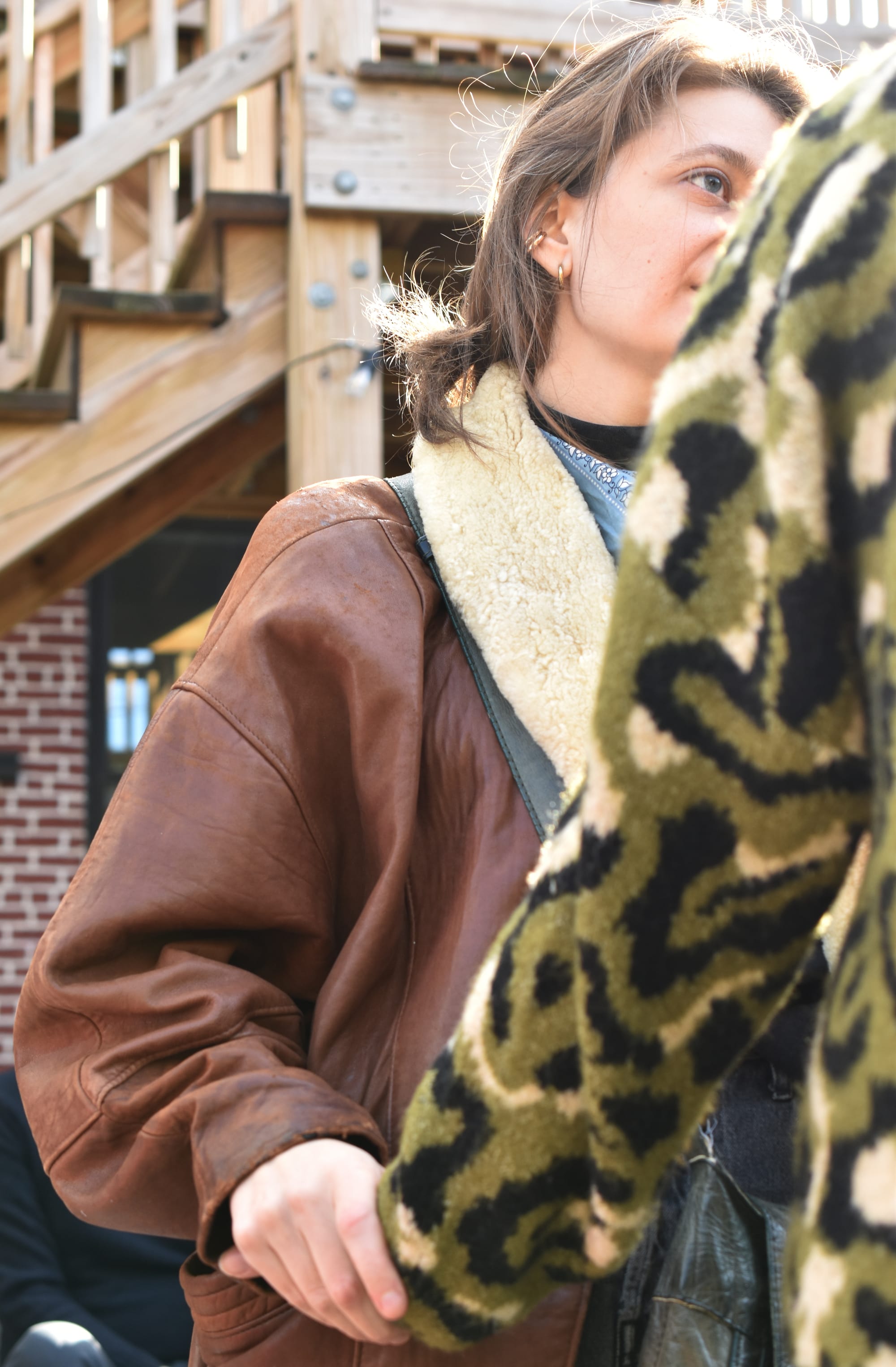
[LEFT] Mijares in conversation with guests and friends. [CENTER] and guest laughing. [RIGHT] A guest expresses gratitude for Mijares' performance. | NaBeela Washington/15 West
"We engage in our own flowering every time we phone a friend, help a neighbor, smile at a dog. We desire so deeply to be a part of the flower bed."


[LEFT] Wildflowers bloom in Leisure's garden. [RIGHT] A table of refreshments after Mijares' performance. | NaBeela Washington/15 West
Mijares' mascletà is not just a performance, it's a ritual of reckoning. It asks us to confront inherited violence, to choose what we burn, and to imagine what might bloom in its place.
Visitor Information
Hours: Sundays, 2:00-5:00 PM, Oct 19 - Nov 16 2025
Admission: Free and open to all ages
What's on View: A textile piece, consisting of nylon mesh, embroidery floss, beads, chains, and lag screw hook, is on display in front of the gallery; the piece is accompanied by a video of the October 19 opening performance (approximately 25 minutes).
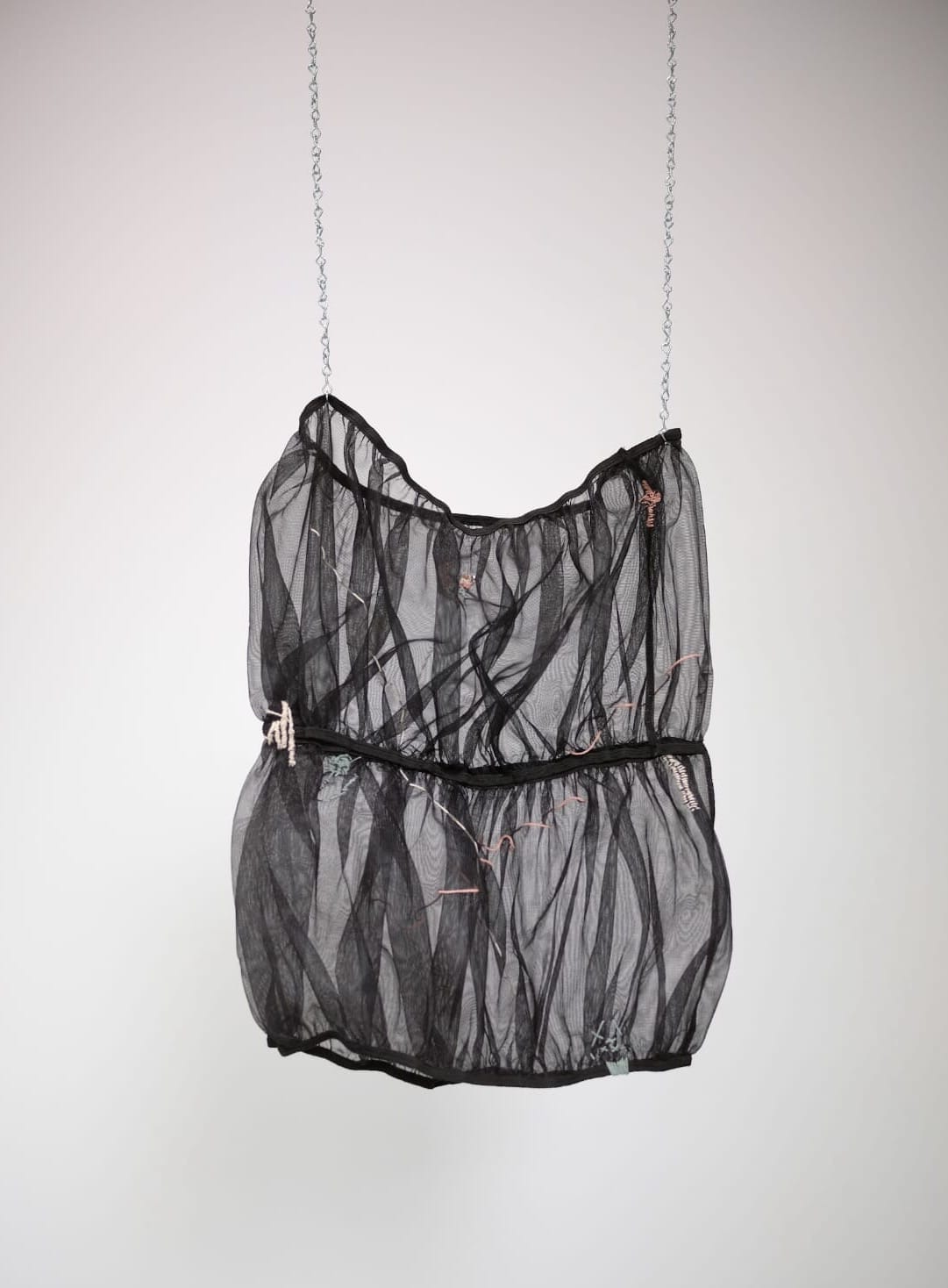
The video captures Mijares performing a poetic meditation on combustion, bodies, flowering, and ritual, followed by a collective moment where audience members throw wool-wrapped twigs into a bonfire in the gallery's garden. The work weaves together themes of colonization, escape, nature, and the violence embedded in tradition, echoing the Valencian mascletà's own complicated history.
Location: 2444 W Division St, Chicago, IL 60622
Contact: Leisure Gallery [website] | [Instagram] | Natasha Mijares [website] | [Instagram]
See accessibility details below.
Accessibility Score: 4.25/5
━━━━━━━━━━━━━━━━━━━━━━━━━━━━━━━━━━━━ 🚶🏼 Mobility ●●●●● Fully accessible indoor viewing 👂🏽 Sensory ●●●●○ Controlled environment; video content 🧠 Cognitive ●●●●● Self-paced viewing (drop-in hours) 💬 Communication ●●●○○ Video captioning available; English language 💰 Economic ●●●●● Free admission ⏰ Time ●●●○○ Limited hours (Sundays only, 2-5PM) 🫱🏽🫲🏿 Participation ●●●●● Fully passive viewing experience 📍 Transit ●●●●○ Multiple CTA options (49, 70 buses; Red/Blue lines)
Access Details:
Leisure's main entrance has two steps. They have a wheelchair accessible entrance and the space is built to ADA standards. Seating available for video viewing. Video includes audio at conversational volume. Climate-controlled space, estimated 6-15 visitors at a time. Accessible restroom near rear of gallery. Content note: Video includes fire and smoke imagery.
Getting There:
CTA: 49 Western Bus, 70 Division Bus, Red and Blue lines | Street parking available on Division St
Accommodations: Please let Leisure know if you require any accommodations and they'll be happy to assist: office@leisure.place
*Accessibility scoring is standard practice in our arts coverage.*


